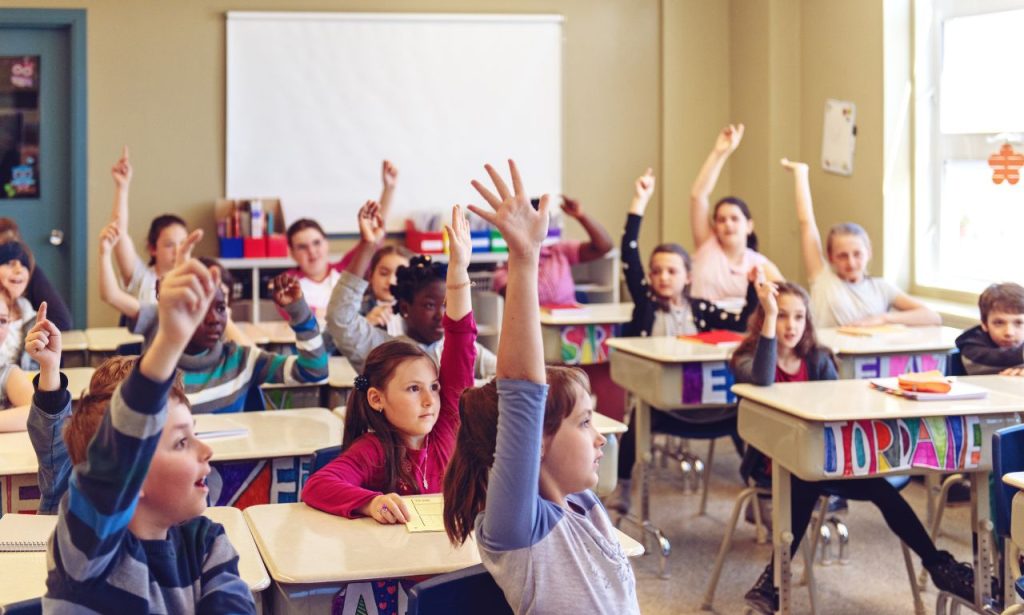Creating a positive classroom culture isn’t just about hanging colorful posters or playing background music; it’s about fostering a sense of community and mutual respect. It’s about building an environment where students feel genuinely safe, valued, and excited to learn. After analyzing data from over 15,000 classrooms nationwide, researchers found that students in positive learning environments showed 23% higher academic achievement compared to their peers in traditional settings.
Throughout this guide, we’ll explore proven strategies that transform ordinary classrooms into thriving communities. You’ll discover practical techniques for establishing clear expectations, building meaningful relationships, and creating an atmosphere where every student can flourish. Whether you’re a first-year teacher or a seasoned educator looking to refresh your approach, these insights will help you build the classroom culture your students deserve.
Importance of a Positive Classroom Environment
Students spend roughly 1,000 hours each year in their classrooms. That’s more time than they spend with their families during waking hours. When that environment feels hostile, chaotic, or unwelcoming, it creates ripple effects that extend far beyond academic performance.
Research from the University of Chicago reveals something fascinating: students in positive classroom environments show 40% less stress-related behavior and demonstrate significantly higher levels of intrinsic motivation. These aren’t just feel-good statistics – they translate into real outcomes. Students who experience positive classroom cultures are three times more likely to pursue advanced coursework and twice as likely to report enjoying their school experience.
The impact extends beyond test scores. Positive classroom environments rewire students’ brains for success. Neuroscientist Dr. Mary Helen Immordino-Yang’s groundbreaking research shows that when students feel emotionally safe, their prefrontal cortex – the brain’s executive center – functions more effectively. This means better decision-making, improved focus, and enhanced creativity.
Establish Clear Expectations and Consistent Rules

Here’s what most teachers get wrong about classroom rules: they create them in isolation and present them as non-negotiable commandments. Students immediately tune out because they had zero input in the process.
Smart teachers flip this script entirely. They involve students in creating classroom expectations through collaborative discussions. During the first week of school, facilitate conversations about what everyone needs to feel safe, respected, and ready to learn. Students often suggest the same rules you would have imposed, but now they own them.
Keep your expectations crystal clear and positively framed. Instead of “Don’t interrupt,” try “We listen when others speak.” Rather than “No phones,” consider “We stay present and engaged.” This positive framing shifts the focus from what students can’t do to what they should do.
Consistency becomes your superpower here. When you enforce rules fairly and predictably, students develop trust in the system. They know what to expect, which reduces anxiety and behavioral issues. Document your expectations visually and refer to them regularly, but avoid turning your classroom into a prison of posted rules.
Culture-Building Exercises
Building classroom culture requires intentional activities that bring students together around shared experiences. Morning meetings work incredibly well in elementary classrooms but don’t overlook their power in secondary settings as well.
Start each week with a brief community circle where students share something positive from their weekend or express gratitude for a classmate. These five-minute investments pay enormous dividends in classroom cohesion. Students begin seeing each other as whole people rather than just academic competitors.
Team-building activities shouldn’t feel forced or artificial. Create authentic opportunities for collaboration through project-based learning, peer tutoring, or classroom jobs, where students work together toward common goals. As they do, natural bonds of trust and camaraderie form. They start supporting each other’s success rather than celebrating each other’s failures.
Consider implementing a classroom identity project early in the year. Students collaborate to create a class motto, design a flag, or develop shared traditions. This ownership mentality transforms “Mrs. Johnson’s classroom” into “our learning community.”
Conduct Regular Classroom Meetings
Weekly classroom meetings serve as the heartbeat of your culture. These aren’t disciplinary sessions or academic conferences – they’re opportunities for genuine community building and problem-solving.
Structure your meetings around four key components: appreciation, problem-solving, planning, and celebration. Students learn to recognize each other’s contributions, address conflicts constructively, and take ownership of their learning environment.
During appreciation time, encourage specific recognition rather than generic compliments. “Thanks to Marcus for helping me understand fractions yesterday” carries more weight than “Marcus is nice.” This specificity helps students understand exactly which behaviors strengthen their community.
Problem-solving segments teach conflict-resolution skills that extend far beyond your classroom. When issues arise, guide students through identifying the problem, brainstorming potential solutions, and implementing agreed-upon solutions. They learn that challenges are opportunities for growth rather than reasons for punishment.
Strategies for Effective Communication
Communication in positive classroom cultures flows in multiple directions. Traditional classrooms primarily feature teacher-to-student transmission, but thriving communities also embrace student-to-teacher and student-to-student dialogue.
Practice active listening with the same intensity you expect from students. When a student shares something important, put down your materials, make eye contact, and respond thoughtfully. Students notice when you genuinely listen to them versus when you’re just waiting for your turn to talk.
Teach students to communicate respectfully with each other through modeling and explicit instruction. Role-play difficult conversations, practice giving constructive feedback and celebrate moments when students handle conflicts independently. These skills serve them throughout their lives.
Use “I” statements when addressing behavioral issues. “I feel distracted when there’s talking during instruction” lands differently than “You’re being disruptive.” Students respond better to personal impact statements than accusatory language.
Involving Parents and Guardians
Parents want to support their children’s education, but they often feel uncertain about how to provide effective help. Proactive communication builds bridges that benefit everyone involved.
Share positive news before problems arise. When parents only hear from the school during crises, they develop negative associations with teacher contact. Send weekly highlights that celebrate student achievements, share interesting classroom moments, or announce upcoming learning opportunities.
Create multiple communication channels to accommodate different family preferences. Some parents prefer email updates, others respond better to text messages, and many appreciate old-fashioned phone calls. Meet families where they are rather than forcing them into your preferred communication style.
Involve parents in classroom culture through volunteer opportunities, expertise sharing, or home extension activities. When families feel connected to the classroom community, students benefit from aligned support systems.
Modeling Positive Behavior
Students watch your every move, especially during challenging moments. How you handle frustration, mistakes, and unexpected situations teaches them more about character than any lecture ever could.
Admit your mistakes openly and model the recovery process. When you mispronounce a student’s name, forget to grade assignments, or lose your patience, acknowledge the error and demonstrate how to make things right. Students learn that mistakes are a natural part of being human and manageable rather than catastrophic.
Show genuine curiosity about student interests, even when they differ from your own. Ask authentic questions about their hobbies, listen to their music recommendations, and learn about their cultural backgrounds. Students reciprocate this interest in your subject matter.
Maintain professional optimism even during difficult days. Students pick up on your energy and mirror it back. When you approach challenges with problem-solving enthusiasm rather than resignation, students develop similar resilience.
Embracing Vulnerability to Build Trust
Vulnerability may sound risky in educational settings, but appropriate transparency can strengthen teacher-student relationships. Share your learning journey, including struggles and growth moments.
Tell students about subjects that challenged you in school, career decisions that didn’t work out, or skills you’re currently developing. This humanizes you and normalizes the learning process. Students come to realize that everyone faces difficulties and that persistence is more important than perfection.
Create space for students to share their vulnerabilities safely. Classroom communities thrive when members feel comfortable expressing uncertainty, asking for help, or admitting confusion. Celebrate these moments of courage rather than rushing to fix every problem.
Evidence-Based Teaching Practices
Effective classroom culture must support actual learning, not just positive feelings. Research-backed instructional strategies create environments where students experience consistent success, building confidence alongside competence.
Implement formative assessment practices that provide immediate feedback without high stakes. Exit tickets, quick polls, and peer discussions help students monitor their understanding, providing you with real-time data about their needs.
Utilize differentiated instruction to ensure that every student experiences an appropriate challenge level. When assignments are too easy, students become bored and disengaged from the learning process. When they’re impossibly difficult, students shut down entirely. Finding that sweet spot requires ongoing adjustment based on student responses.
Supporting Student Well-being and Motivation

Student motivation thrives in environments that meet the basic psychological needs of autonomy, competence, and relatedness. Structure your classroom to consistently address all three areas.
Provide choices whenever possible, even in small ways. Students might choose their seating arrangement, select from multiple assignment options, or decide how to demonstrate their learning. These choices foster ownership and engagement.
Celebrate growth over achievement to build intrinsic motivation. When students see improvement as a goal rather than perfection, they take more risks and persist through challenges. Track progress visually and help students recognize their development.
Conclusion
Building a positive classroom culture requires intentional effort, but the rewards extend far beyond test scores. Students who experience genuine community in their learning environments develop confidence, empathy, and resilience that serve them throughout their lives.
Start small and stay consistent. Please choose one or two strategies from this guide and implement them thoroughly before adding others. Culture building is a marathon, not a sprint; sustainable changes occur gradually.
Remember that every interaction either builds or erodes classroom culture. Make each moment count, celebrate small victories, and trust the process. Your students are counting on you to create the environment they need to thrive.
ALSO READ: How Does Edtech Help Students and Teachers
FAQs
A: Most teachers see initial changes within 2-3 weeks of consistent implementation, but deep cultural shifts typically take 6-8 weeks to establish fully.
Q: What if some students resist positive culture initiatives? A: Resistance often indicates past negative experiences. Stay patient and consistent, and focus on building individual relationships with resistant students.
A: Absolutely. Students facing difficult circumstances often benefit most from positive, stable classroom environments that provide predictability and support.
A: Acknowledge the stress while maintaining your community practices. Use test prep as a collaborative problem-solving approach rather than an individual competition.
A: Trying to implement too many changes simultaneously. Focus on consistency with a few key practices rather than attempting everything at once.




